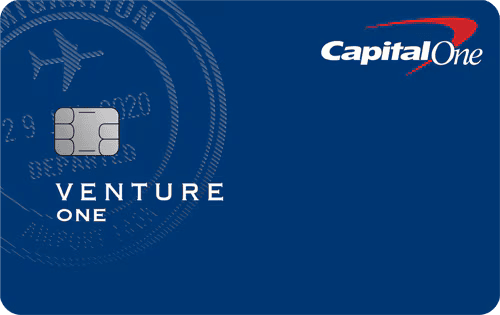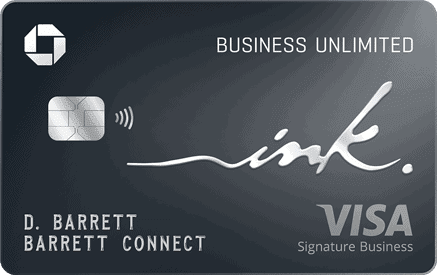
10xTravel is part of an affiliate sales network and receives compensation for sending traffic to partner sites, such as CreditCards.com. This compensation may impact how and where links appear on this site. This site does not include all financial companies or all available financial offers. Terms apply to American Express benefits and offers. Enrollment may be required for select American Express benefits and offers. Visit americanexpress.com to learn more. All values of Membership Rewards are assigned based on the assumption, experience and opinions of the 10xTravel team and represent an estimate and not an actual value of points. Estimated value is not a fixed value and may not be the typical value enjoyed by card members.
Note: Some of the offers mentioned below may have changed or may no longer be available. The content on this page is accurate as of the posting date; however, some of our partner offers may have expired. You can view current offers here.
If you’re looking to create unforgettable travel experiences with your Capital One miles, look no further than their airline transfer partners. You can find amazing value in transferring your points to these partners, but it can be hard knowing how to start this process. From knowing the various transfer ratios to insider tips on maximizing your points, this article will help you navigate Capital One’s extensive list of airline partners.
Overview of Capital One’s Point Currency
In the world of Capital One, points are simply referred to as Rewards Miles. The evolution of Rewards Miles dates back to 2010 when Capital One launched the Capital One Venture Rewards Credit Card–the first card that earned Miles. At the time, cardmembers could use their Miles to be reimbursed for eligible travel purchases. Each Rewards Mile had a fixed value of one cent.
The Capital One program received a significant update in late 2018 when they first introduced the concept of transfer partners. For the first time, in addition to being reimbursed by miles for eligible purchases, cardholders could transfer their points out to partners at a rate of 2:1.5
Fast forward to 2021, when Capital One again made headlines with the launch of their premium rewards travel card: the Capital One Venture X Rewards Credit Card. Today, both the Venture Rewards and Venture X grant you access to all of their 15+ travel partners, most of which are airlines. Most transfer rates are 1:1.
As you can see, Capital One has steadily been making improvements to its program over time. Rewards Miles are arguably now worth more than ever, and you can routinely find redemptions worth much more than one cent per Rewards Mile.
List of Capital One Airline Partners
Capital One currently has 15 airline transfer partners, summarized in the table below:
| Airline Partner | Alliance Affiliation | Transfer Ratio |
|---|---|---|
| Aeroméxico Rewards | SkyTeam | 1:1 |
| Air Canada Aeroplan | Star Alliance | 1:1 |
| Air France-KLM Flying Blue | SkyTeam | 1:1 |
| Avianca LifeMiles | Star Alliance | 1:1 |
| British Airways Executive Club | Oneworld | 1:1 |
| Cathay Pacific Asia Miles | Oneworld | 1:1 |
| Emirates Skywards | None | 1:1 |
| Etihad Guest | None | 1:1 |
| EVA Air Infinity MileageLands | Star Alliance | 2:1.5 |
| Finnair Plus | Oneworld | 1:1 |
| Qantas Frequent Flyer | Oneworld | 1:1 |
| Singapore Airlines KrisFlyer | Star Alliance | 1:1 |
| TAP Air Portugal Miles&Go | Star Alliance | 1:1 |
| Turkish Airlines Miles&Smiles | Star Alliance | 1:1 |
| Virgin Red | SkyTeam | 1:1 |
This list of partners, as well as their specific transfer ratios and transfer bonus offers, can change over time. For the latest information, refer to the official list provided by Capital One.

Best Practices for Transferring Points
Booking award travel is a delicate process. It’s best to know exactly what you’re doing before placing a transfer request. Here are some best practices to always keep in mind.
Confirm Award Availability First
Transferring your Capital One Miles to a partner is a one-way street. Once you have converted your Miles to the partner currency, there’s no way to transfer them back to your Capital One account.
Always confirm that award availability exists for your desired route before transferring your Miles to the partner airline. This includes any potential blackout dates. The good news is that the transfer time for most of Capital One’s partners is instantaneous, so you can often book your award ticket shortly after transferring.
We generally recommend against preemptively transferring Miles, even if there’s a good transfer bonus available. This is because some partner airlines have expiration policies on their Miles (for example, Emirates miles expire three years after a transfer). In addition, your points are most flexible when kept in Capital One’s ecosystem, and they’ll never expire as long as your account is open.
Check Multiple Partners
Your desired route may be available on any number of partner airlines. Different airlines offer different redemption rates for the same seat, so make sure you do your research and find the partner that offers the seat at the lowest points cost.
Remember that many of Capital One’s airline partners belong to global alliances or have one-off partnerships with other carriers. The best deal may be with an airline that isn’t part of Capital One’s list. However, through these partnerships, you can still book these seats with Capital One Miles.
Check For Transfer Bonuses
The textbook way to maximize an award redemption is by making use of ongoing transfer bonuses. Capital One periodically releases transfer bonuses to some of their partners. Unfortunately, they tend to crop up at a moment’s notice and are difficult to predict. The only way to stay on top of this is to check for updates as often as possible.
If you’re lucky enough to be able to take advantage of a transfer bonus, you’ll typically get between 15% to 30% more value from your Capital One Miles. For instance, a 30% transfer bonus to Flying Blue means that 1,000 Capital One Miles becomes 1,300 Flying Blue Miles.

Program Rules and Limitations
The Capital One program is pretty straightforward when it comes to earning and transferring Miles to partners. Here’s an overview of some program policies to be aware of.
Eligible Cards
To access Capital One’s transfer partners, you must have one of the following credit cards:
- Capital One VentureOne Rewards Credit Card
- Capital One Venture Rewards Credit Card
- Capital One Venture X Rewards Credit Card
- Capital One Spark Miles for Business Credit Card
- Capital One Spark Miles Select for Business Credit Card
Other popular cards offered by Capital One, including the Quicksilver, Savor and SavorOne cards, do not give you access to transfer partners.
Capital One VentureOne Rewards Credit Card
20,000
Bonus Miles
after you spend $500 in the first 3 months
Capital One Venture Rewards Credit Card
75,000
miles
once you spend $4,000 on purchases within 3 months from account opening, equal to $750 in travel.
Annual Fee: $95
Capital One Venture X Rewards Credit Card
75,000
Venture Miles
after you spend $4,000 in purchases in the first 3 months.
Annual Fee: $395
Capital One Spark Miles for Business
50,000
Bonus Miles
after you spend $4,500 in the first 3 months
Annual Fee: $0 for your first year, then $95.
Minimum and Maximum Transfer Limits
You’ll need a minimum of 1,000 Capital One Miles to initiate a transfer. After 1,000, you can increase the transfer amount in increments of 100.
Capital One generally doesn’t impose a maximum limit on the number of Miles you can transfer to airline partners.
Expiration Policies
Capital One Miles typically don’t expire as long as your account is open and in good standing. However, if you close your account, any unused Miles may be forfeited.
In addition, once you transfer your Miles to a partner, they are subject to the expiration policies in that partner program’s terms and conditions. Many airline Miles do expire, so keep this in mind before transferring.
Restrictions and Blackout Dates
You can transfer your Capital One Miles at any time–there are no restrictions or blackout dates. However, each airline partner may have its own set of rules and restrictions regarding award availability, blackout dates and booking procedures.
Earning Capital One Miles
To earn Capital One Miles is to get the right credit card and put your everyday spend on it. Each card comes with a different sign-up bonus and set of earning categories. Take advantage of both to maximize your earnings.
On the personal side, you have three options:
- Entry-level: Capital One VentureOne Rewards Credit Card ($0 annual fee)
- Mid-tier: Capital One Venture Rewards Credit Card ($95 annual fee)
- Premium: Capital One Venture X Rewards Credit Card ($395 annual fee)
On the business side, you have two options:
- Entry-level: Capital One Spark Miles Select for Business Card ($0 annual fee)
- Mid-tier: Capital One Spark Miles for Business Card ($95 annual fee)
For both the personal and business cards, in exchange for the higher annual fees, you’ll also benefit from stronger earning categories and more travel benefits.
Credit card spending is the only way to earn Capital One Miles for the time being. While there is a Capital One Shopping Portal, using it won’t earn you Miles.
Conclusion
Capital One has a long list of airline partners that can help you make your dream vacation a reality. To access them, you need one of five Capital One Miles-earning credit cards. To book award travel, you’ll need to rack up Miles and transfer them to the right partner program.
In the points and miles world, things like award availability, program terms and conditions and transfer ratios can change in the blink of an eye. We highly recommend staying tuned in to the Capital One program to ensure you can get the most value out of your points.
New to the world of points and miles? The Chase Sapphire Preferred® Card is the best card to start with.
With a bonus of 75,000 bonus points after you spend $5,000 on purchases in the first 3 months from account opening. , 5x points on travel booked through the Chase Travel Portal and 3x points on restaurants, streaming services, and online groceries (excluding Target, Walmart, and wholesale clubs), this card truly cannot be beat for getting started!
once you spend $4,000 on purchases within 3 months from account opening, equal to $750 in travel.
after you spend $4,000 in purchases in the first 3 months.
after you spend $500 in the first 3 months
after you spend $4,500 in the first 3 months
Editors Note: Opinions expressed here are author’s alone, not those of any bank, credit card issuer, hotel, airline, or other entity. This content has not been reviewed, approved or otherwise endorsed by any of the entities included within the post.












